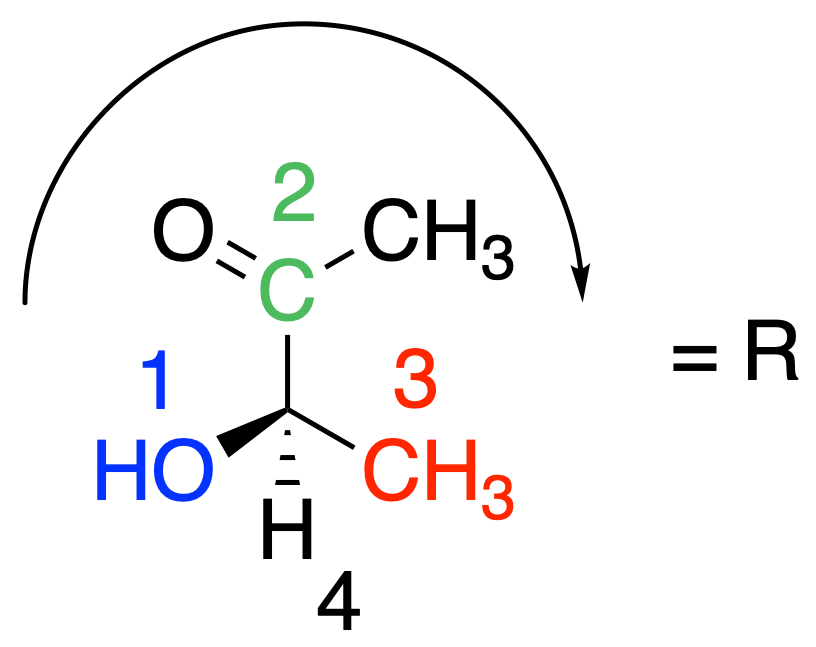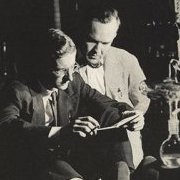-
Posts
4586 -
Joined
-
Last visited
-
Days Won
12
Content Type
Profiles
Forums
Events
Posts posted by hypervalent_iodine
-
-
On 9/30/2020 at 2:57 AM, NerdShift said:
Thanks for your reply.
Yes i know about the Aufbau principle, but as I've expressed in my first post, Zn, Cd and Hg are exceptions (also 24Cr, 42Mo & 74W);
For example when an atom has 20 electrons (Ca), its 4s is filled while the 3d is empty, and in an atom with 21 electrons, the 21th e belongs to 3d; so we expect the next atoms to have a filled 4s subshell while their 3d is not filled yet, but when we reach Z=24 (Cr), we'll realize that its electron configuration is:
24Cr: [Ar] 3d⁵ 4s¹ (instead of [Ar] 3d⁴ 4s²)
And this is also true for 29Cu; which has a filled 3d but a half filled 4s:
29Cu: [Ar] 3d¹⁰ 4s¹
(I think it might happen due to the more stability of filled & half filled subshells...)
So, I really expect the 30th electron to go to the 4s subshell and fill it, as we see in Zn's electron configuration:
30Zn: [Ar] 3d¹⁰ 4s²
Thus, if the last electron of Zn (30th) belongs to s subshell, why does zinc belong to the d-block?!
(I know about the blocks;
How elements are separated to s p d f blocks, according to my high school book:
If the last electron of an atom belongs to a special subshell, the atom would be in the corresponding block.
(I know it might be simplified, that's a high school book afterall.)
So I feel a contrast between the subshell to which the 30th electron belongs, and the definition of blocks.
Please let me know if I am wrong
& Sorry for non scientific terminology or grammatical mistakes, I am not a native English speaker you know
Yes, sorry, I was writing on my phone so I didn't have time for a full reply.
The two exceptions you mention are actually a little misleading. I believe that in reality, they do fill the 4s orbital first, then as electrons start filling up the 3d orbitals one of the 4s electrons moves into the 3d to give 3d54s1 / 3d104s1. It is not a case of only putting one electron into the 4 s and then filling up the 3d orbitals, which is maybe where you are confused with Zn. The reasons for this come down to stability, as you mentioned. It is more favourable to have a completely full or half full set of d orbitals.
1 -
Actually, the 4s is filled before the 3d. I suggest looking at the Aufbau principle to help with this, but you can also figure out out by looking at the periodic table if you know where the s, p, d and f blocks are.
0 -
I have changed it to match other user groups, so you should be okay now.
0 -
I'm actually not 100% sure how it deals with PMs. I would have thought that those would have been hidden as well since that would fall under the umbrella of "content". However, we have spam posts set to be hidden rather than deleted and hiding posts isn't an option available even to me in PMs. I do know that if it does happen, it doesn't happen immediately. Posts get removed in batches.
0 -
I was more talking about the coverage of the article. However, they discounted the possibility of SO2 because in order to observe the results they got, it would need to be a bit hotter (about double) than what is measured in the upper clouds. Surely the simpler explanation is that they detected SO2 that was a bit hot, as opposed to phosphine?
1 -
I’ll admit this isn’t an area I know much about but the results seem a bit (a lot?) overstated. They aren’t even completely sure it’s phosphine. I read somewhere that the rotational transition they measured could also be within the same region that SO2 might absorb on a planet with H2SO4 clouds. Is this accurate?
2 -
On 9/5/2020 at 4:16 AM, Edmond Nzivugira said:

 O-H bond is tough due to the difference in electronegativities betn the two molecules... hence it's called a hydrogen bond due to this toughness, it's hard to break it down since it requires too much force.. that's why when added to the molecule, its boiling point increases..
O-H bond is tough due to the difference in electronegativities betn the two molecules... hence it's called a hydrogen bond due to this toughness, it's hard to break it down since it requires too much force.. that's why when added to the molecule, its boiling point increases..
In alcohols i guess it's hydrogen bonding
There is more than just hydrogen bonding, but it is an important one.
0 -
3 hours ago, Anne45 said:
If I get sick then I will immediately stop the experiment
Worth mentioning that prevention is better than cure. Are you doing this in consultation with a doctor to monitor your health?1 -
On 7/25/2020 at 8:20 PM, swansont said:
IDoNotCare has been suspended for multiple rules violations, including abusive posts and soapboxing
Exciting update! IDoNotCare had now been permanently banned for similar offences.
3 -
I've noticed that our recommendations are the same, though I'm not sure what they were before (I think they were the same as the CDC's were). We haven't had many cases, though last week a small cluster of about 9 popped up. Given how things have gone in VIC, and how fast our state premier was to close state borders back up, you'd think they're want everyone to get tested who may have been in contact? I had to get tested on Monday as I was showing symptoms and had been in one of the areas with a contact tracing alert, and while the line was very long (it took me two hours), they seemed to be coping and I got my result back within 48 hours (it came back negative). It is very odd for a state (or country) so desperate to avoid a second wave to explicitly tell people not to get tested unless they're symptomatic, given what we know about asymptomatic carriers.
0 -
For O, you also need to be aware of drawing conventions with Fischer projections. Namely, the bonds on the left and right are coming out towards you.
0 -
Having resonance doesn't mean something is aromatic, you also have to have a fully conjugated system. Have you drawn out the resonance structures?
0 -
You’re very welcome!
0 -
You mistake appears to be that you are considering the functional group as a whole rather than the atoms individually. When assigning priorities, you are supposed to only look one atom out from the chiral carbon. In your case, the atoms attached to this carbon are C, O, H, and C. Assigning priorities to these, the O is first, the H is last and you cannot yet distinguish between the other two. In this case, you take those two carbons and look at that they are connected to. In the first carbon, you have (in CIP order) O, O, and C (NB with double bonds, the atom is counted twice), and in the second carbon you have H, H, and H. The first place in which these differ is in the first priority, where the first carbon has an O and the second a H. Since the O is higher priority than H, that carbon is given the higher priority. Thus you have this:

Since the H is already orientated to the back, we can look at it as is and see that it is R.
3 hours ago, studiot said:As you have example 3 shown the sequence is N C H C , whichever way round round work.
But shouldn't the H be pointing backwards (the lowest priority), not sideways ?
This is just how they've given the question. The point would be that the student has to know to orientate the H properly to assign stereochemistry.
1 -
Staff have recently decided to update the text of Rule 7:
!Moderator Note
Advertising and spam is prohibited. We don't mind if you put a link to your noncommercial site (e.g. a blog) in your signature and/or profile, but don't go around making threads to advertise it. Links, pictures and videos in posts should be relevant to the discussion, and members should be able to participate in the discussion without clicking any links or watching any videos. Videos and pictures should be accompanied by enough text to set the tone for the discussion, and should not be posted alone. Users advertising commercial sites will be banned. Attached documents should also be accompanied by a summary, at minimum. Owing to security concerns, documents must be in a format not as vulnerable to security issues (PDF yes, microsoft word or rich text format, no)
0 -
essereio has been permanently banned for repeated violations of rule 2.1.
2 -
2 hours ago, essereio said:
I'm racist because I don't reward bad behavior?
You can't have your cake and eat it too.
!Moderator Note
No, you're racist because you espouse racist beliefs, the expression of which on this forum (besides being wrong) is also against the rules. Consider yourself banned.
3 -
3 hours ago, sam2209 said:
I'm sorry but we have not been taught this part yet in class. Still have been asked to solve and submit. So if you can answer me I'll be highly grateful. Thanks!!
What have you learnt? We can't do your homework for you, so you will need to make some attempt at this yourself before anyone can give you any guidance.
10 minutes ago, Sensei said:Start from counting the number of Carbon, Hydrogen, Oxygen, Sulfur and other atoms. Then search net using e.g. CxHyBr as keyword (x any y the number of atoms). This way you will find the name of compound. Repeat with the all others. Read Wikipedia articles about these compounds. Maybe these reactions are already described in these articles? It will be a good start of this homework. Don't expect people here will give you the all answers on the golden plate. It doesn't work this way. We are giving just hints, and you have to do the all work by yourself.
Searching by chemical formula won't be helpful in this case. If they have got this far, they should already know how to construct IUPAC names and identify functional groups.
0 -
It is a 14 year old thread, so it’s not totally surprising most of the links no longer work.
0 -
Moreno has been banned for the rather insistent tendency towards racist rhetoric.
2 -
!
Moderator Note
We are not in the business of dispensing medical advice. I recommend you see a doctor when you can.
0 -
Metal organic frameworks are very popular at the moment. https://en.m.wikipedia.org/wiki/Metal–organic_framework
They contain organic components as well obviously, but the area sits much more squarely with inorganic chemistry.
I suspect that the examples given by the OP were used to distinguish synthetic and naturally occurring macromolecules, though it is a bit confusing as rubber can also be naturally occurring.
1 -
42 minutes ago, StringJunky said:
Why do you think this? (bolded part)
!Moderator Note
A question best answered elsewhere, lest this thread continue to get dragged off topic.
0 -
It’s not just limited to proteins either. You can also engineer yeast and bacteria to produce complex chemicals, some requiring several enzymatic steps. For example, I remember a while back there were a couple of papers that did this for the production of codeine and other morphine type compounds. There were problems where some reactions were not compatible with others, so in one paper the authors compartmentalised the enzymatic steps in different organelles yeast, and in the other the authors used two strains of E. coli to complete different halves of the synthesis.
https://www.ncbi.nlm.nih.gov/pmc/articles/PMC4924617/https://pubmed.ncbi.nlm.nih.gov/26847395/
Chemoenzymatic synthesis is a very big area. In fact the Chemistry Nobel prize in 2018 was awarded to 3 people, one of whom (Frances Arnold) received it for pioneering the use of something called directed evolution. Essentially, her lab looks at enzymes that are able to perform reactions that are difficult to do outside of enzymes. They take the gene for the enzyme that is able to perform a given reaction that they are interested in, and create a library of mutants that are then transformed into whatever organism. The mutants are screened and the most active selected for the next round of mutagenesis, etc. They’ve used it towards greener syntheses of compounds used in, for example, pharmaceuticals and biofuels.0



How to dilute squaric acid 98% to 2% solution
in Applied Chemistry
Posted
What are you planning to use squaric acid for?